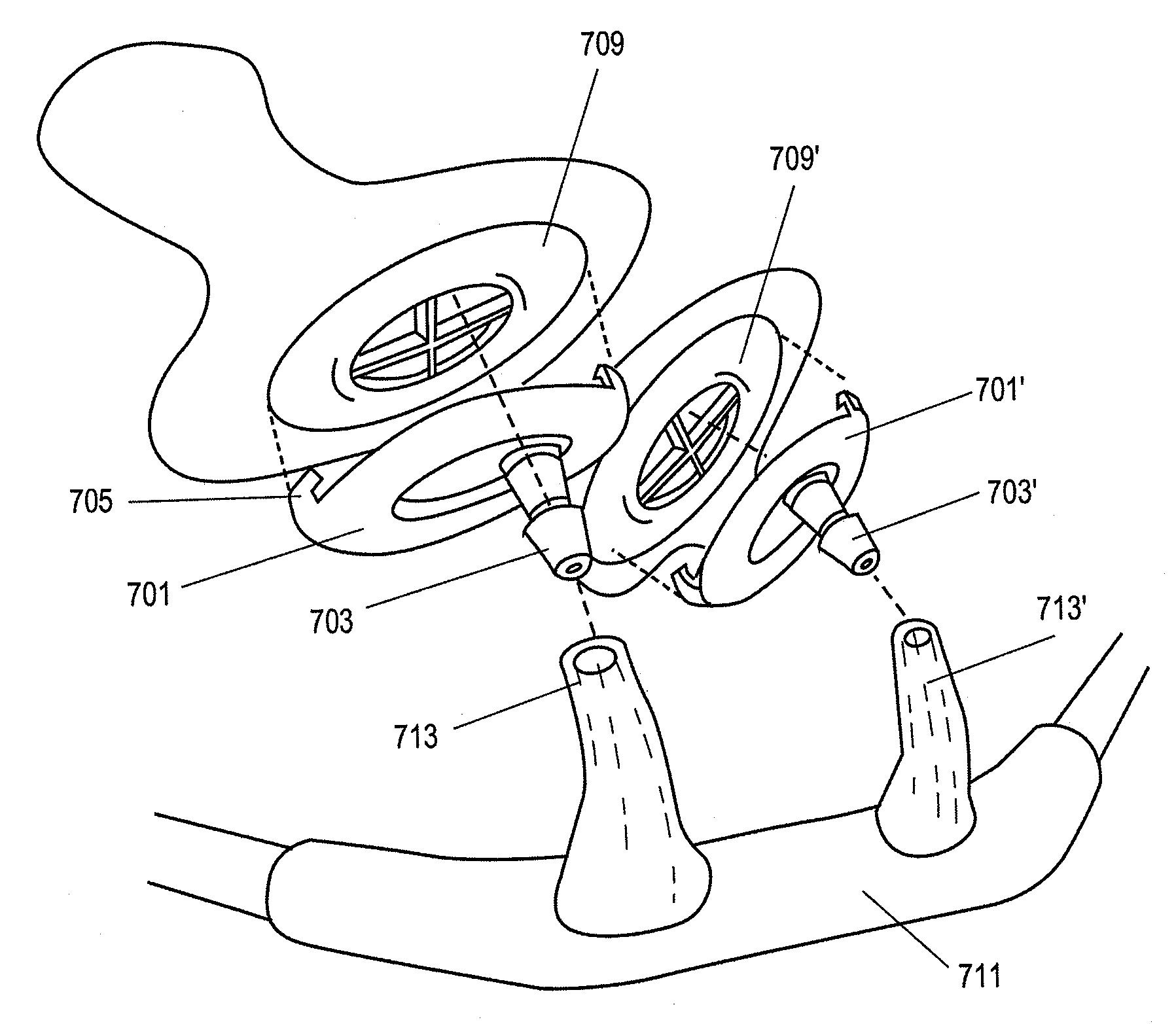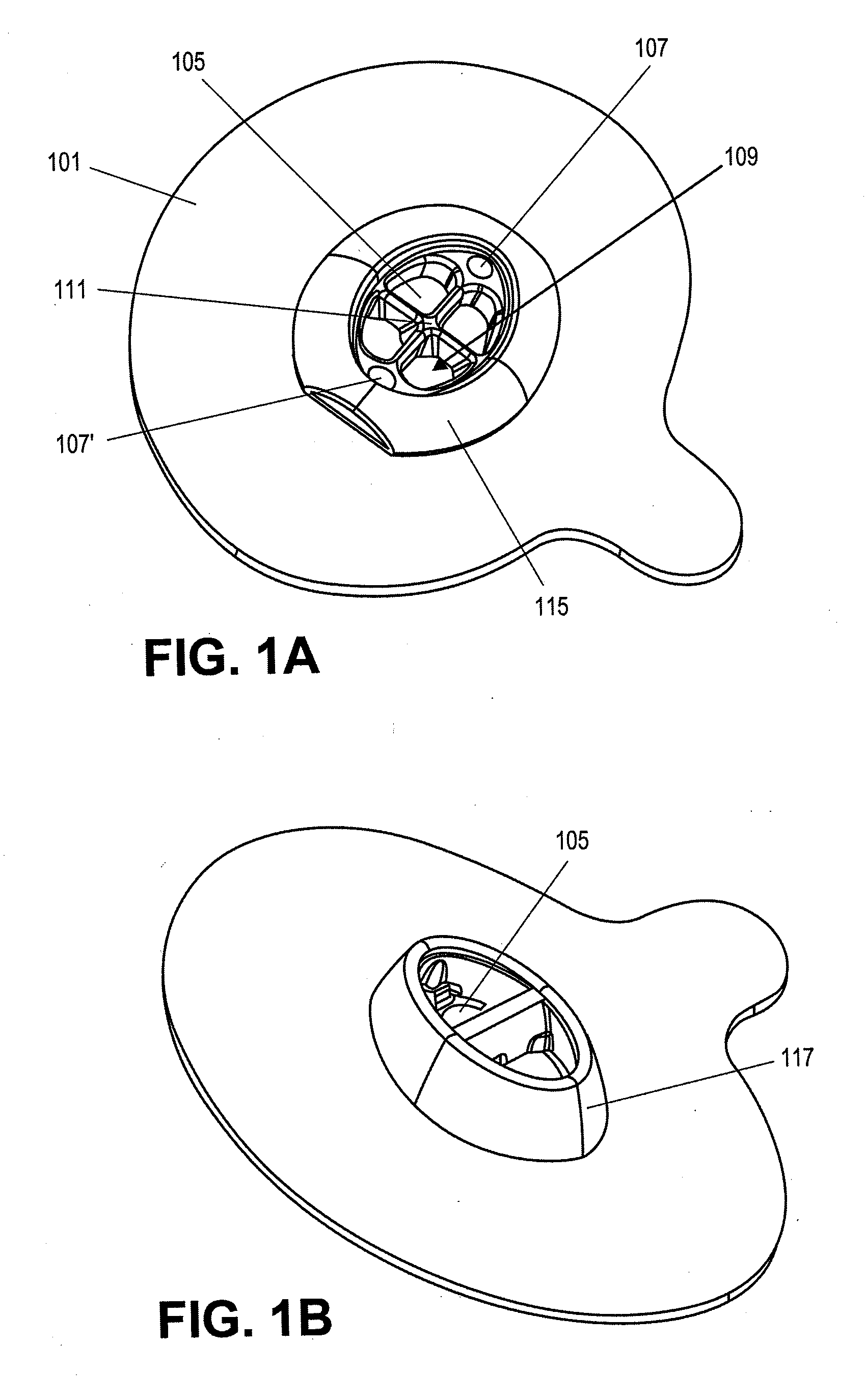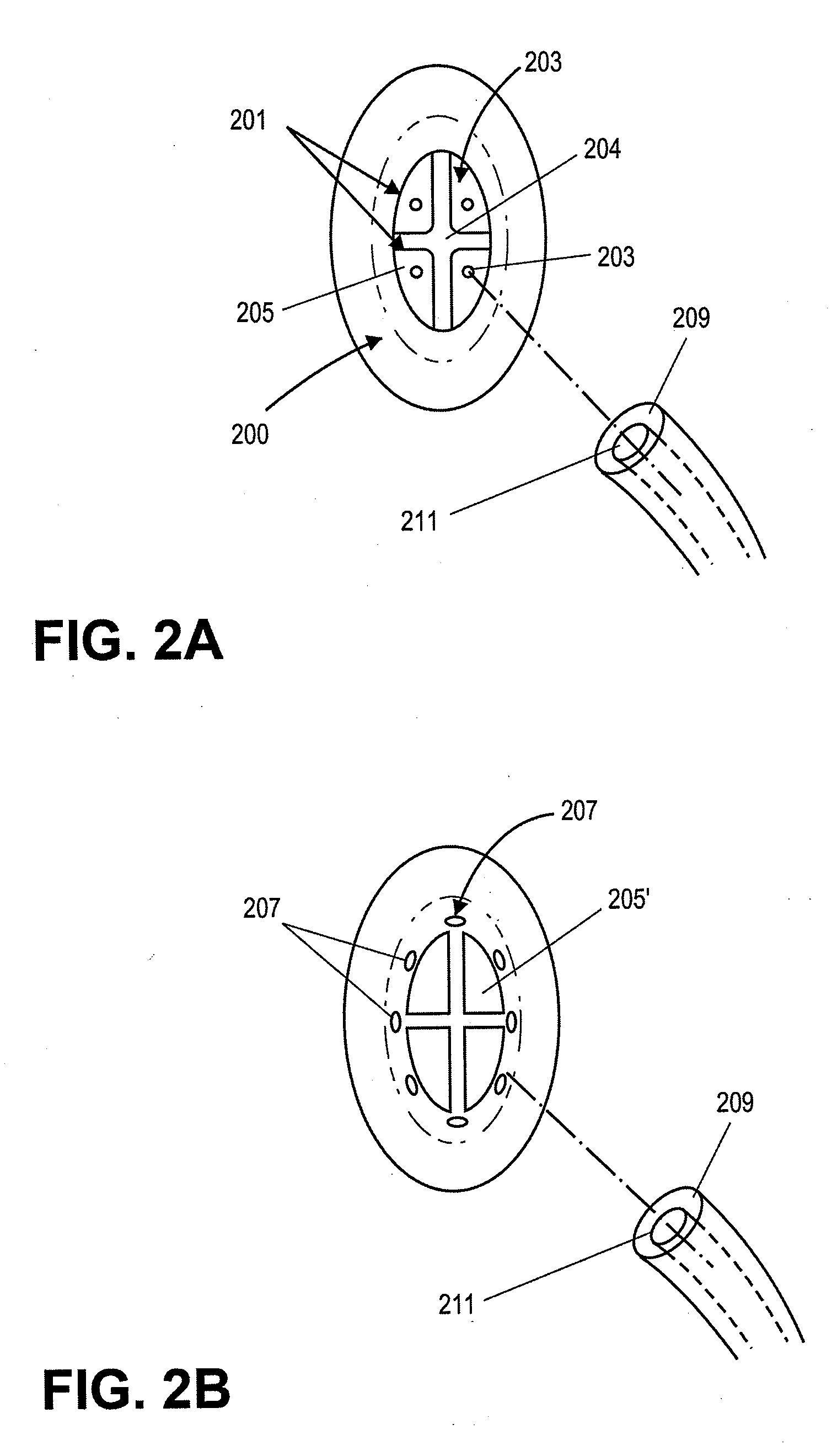Respiratory sensor adapters for nasal devices
a sensor adapter and sensor technology, applied in the field of respiratory sensor adapters for nasal devices, can solve the problems of difficult matching, difficult patient sleep, confusion in diagnosis and treatment, etc., and achieve the effect of changing the resistance to airflow
- Summary
- Abstract
- Description
- Claims
- Application Information
AI Technical Summary
Benefits of technology
Problems solved by technology
Method used
Image
Examples
examples
[0085]FIGS. 3A and 3B illustrate one variation of a system including a nasal respiratory device 300 and a sensor adapter 301 configured to secure a sensor (not shown) in communication with an opening on the distal side of the nasal respiratory device.
[0086]In FIG. 3A the sensor adapter includes a body frame that is horseshoe-shaped proximally forming the attachment site, and extends distally to form the sensor connector. Between the attachment site and the sensor connector is an opening, which is more clearly visible in FIG. 3B. The opening permits the passage of air from the opening without substantially increasing the resistance to airflow through the device.
[0087]When the nasal respiratory device shown in FIG., 3A and 3B is worn, the airflow resistor is placed in communication with the subject's nasal passage, and the adhesive holdfast secures the nasal device in place. The sensor adapter may be attached to the nasal respiratory device either before or after the device is secure ...
PUM
 Login to View More
Login to View More Abstract
Description
Claims
Application Information
 Login to View More
Login to View More - R&D
- Intellectual Property
- Life Sciences
- Materials
- Tech Scout
- Unparalleled Data Quality
- Higher Quality Content
- 60% Fewer Hallucinations
Browse by: Latest US Patents, China's latest patents, Technical Efficacy Thesaurus, Application Domain, Technology Topic, Popular Technical Reports.
© 2025 PatSnap. All rights reserved.Legal|Privacy policy|Modern Slavery Act Transparency Statement|Sitemap|About US| Contact US: help@patsnap.com



